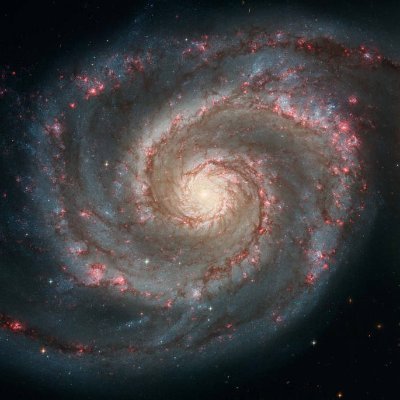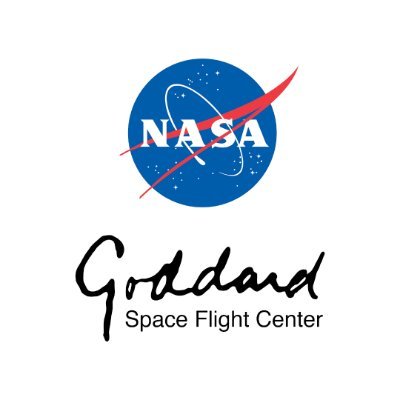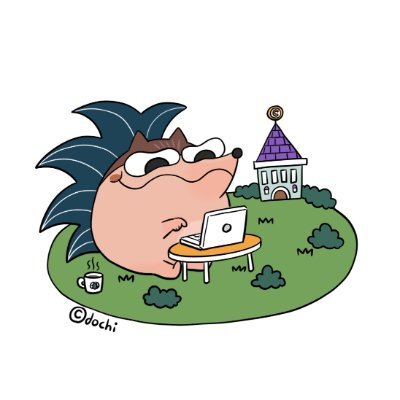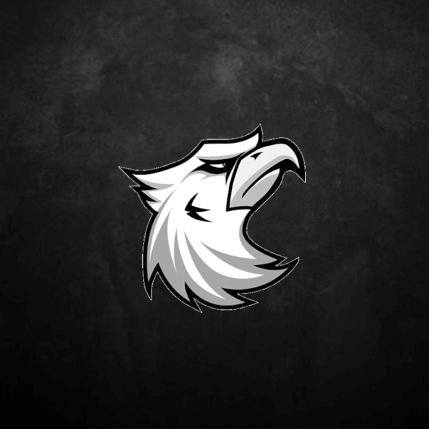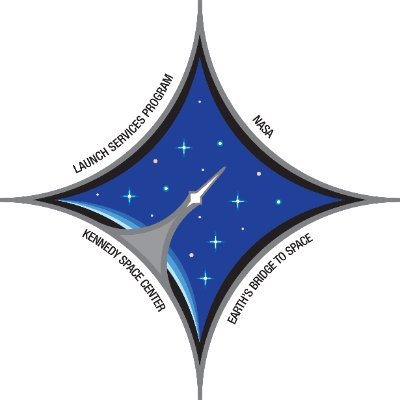#swift20 search results
Data from our Swift and Fermi spacecraft, along with other missions, showed a powerful eruption came from a magnetar — a neutron star with a magnetic field more than 10 trillion times stronger than a refrigerator magnet. go.nasa.gov/40NMKUE #FermiFriday #Swift20
Swift’s UVOT (Ultraviolet/Optical Telescope) was designed to take a standard set of images following a gamma-ray burst. Since 2008, it has autonomously taken additional data if the burst is bright enough, leading to the earliest-ever UV spectrum obtained for a burst! #Swift20
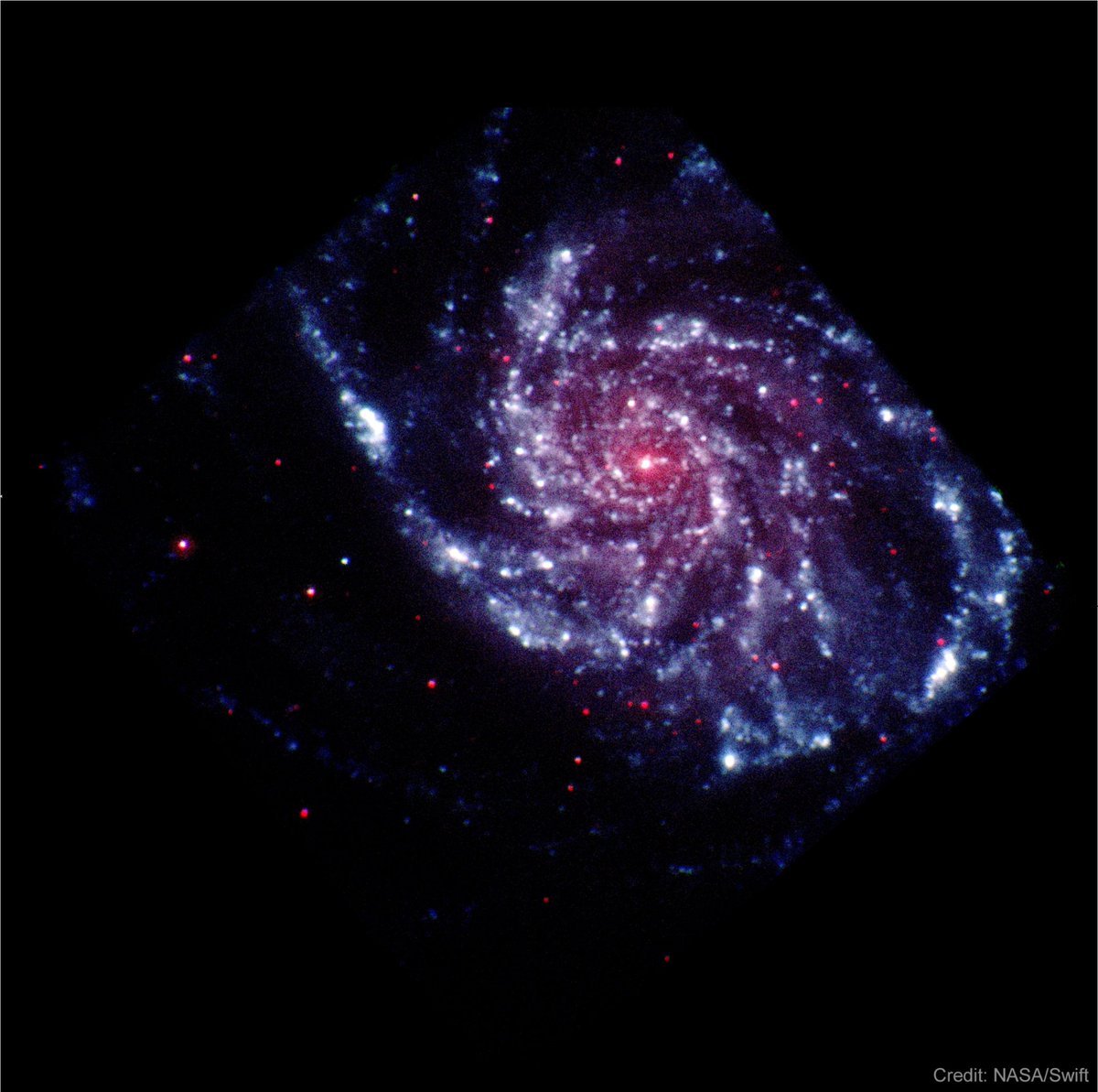
Calling all Swifties! ...Fans of Neil Gehrels Swift Observatory, that is. With instruments to see the universe in gamma-ray, X-ray, ultraviolet & visible light, Swift launched on this day 20 years ago to study gamma-ray bursts & their afterglows. #Swift20 go.nasa.gov/490shi4
20 Novembre 2004 - 20 November 2024: two decades of game-changing astrophysics with the Neil Gehrels Swift Observatory! Let's celebrate together #Swift20
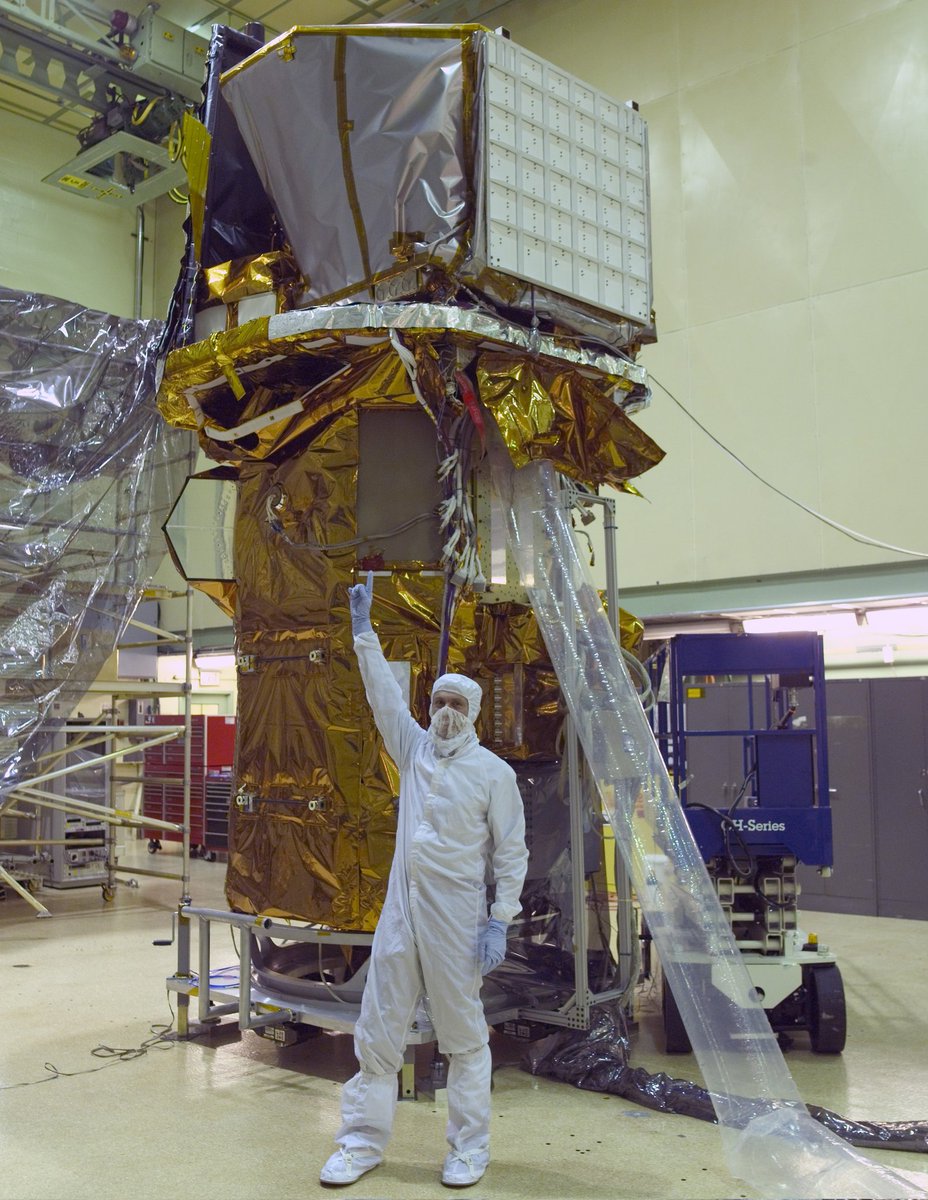
Welcome to Battle of the Bursts! Sixteen explosive cosmic events enter … but only one can win. Over the next week, fill in our bracket, pick your faves, and see which is crowned the champion. Who do you think will win? Check out the Shining 16 and start voting! ⬇️ #Swift20
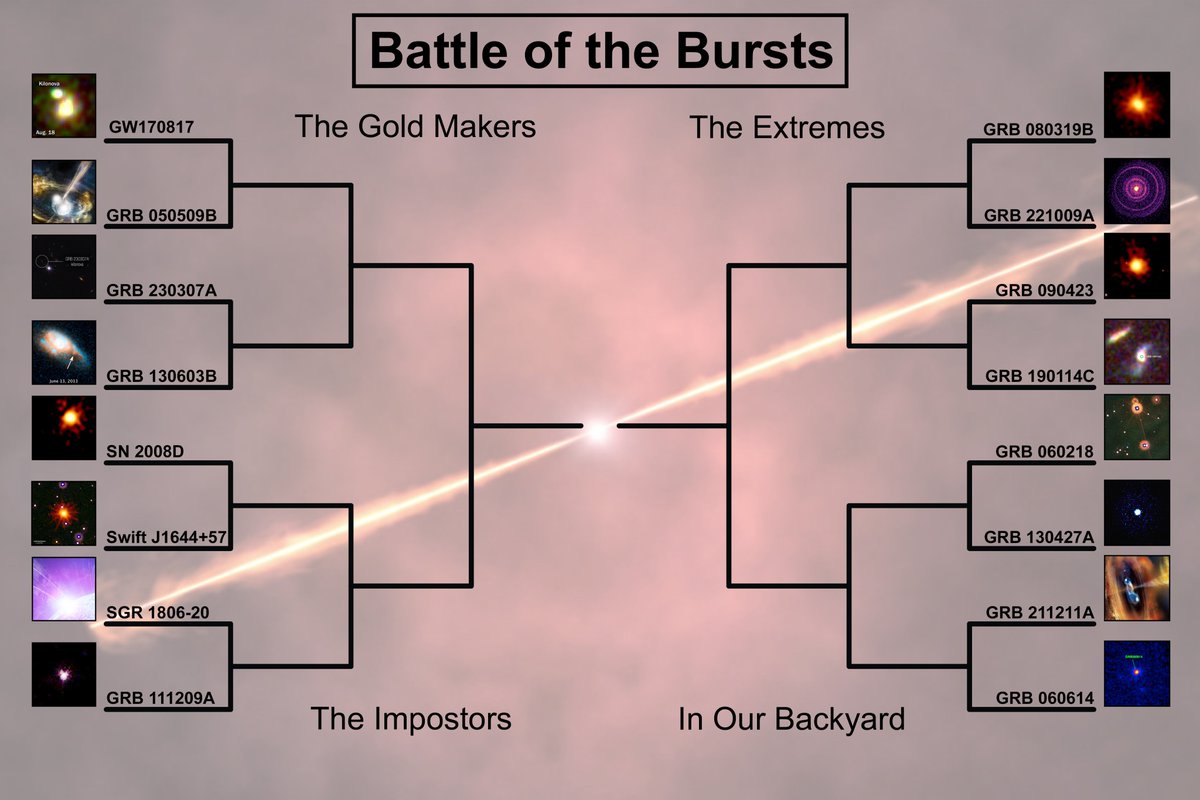
We’re down to The Final Flares in our Battle of the Bursts! Will our champion be Swift J1644+57 or GRB 221009A? Learn more about each explosive event and then vote below! ⬇️ #Swift20
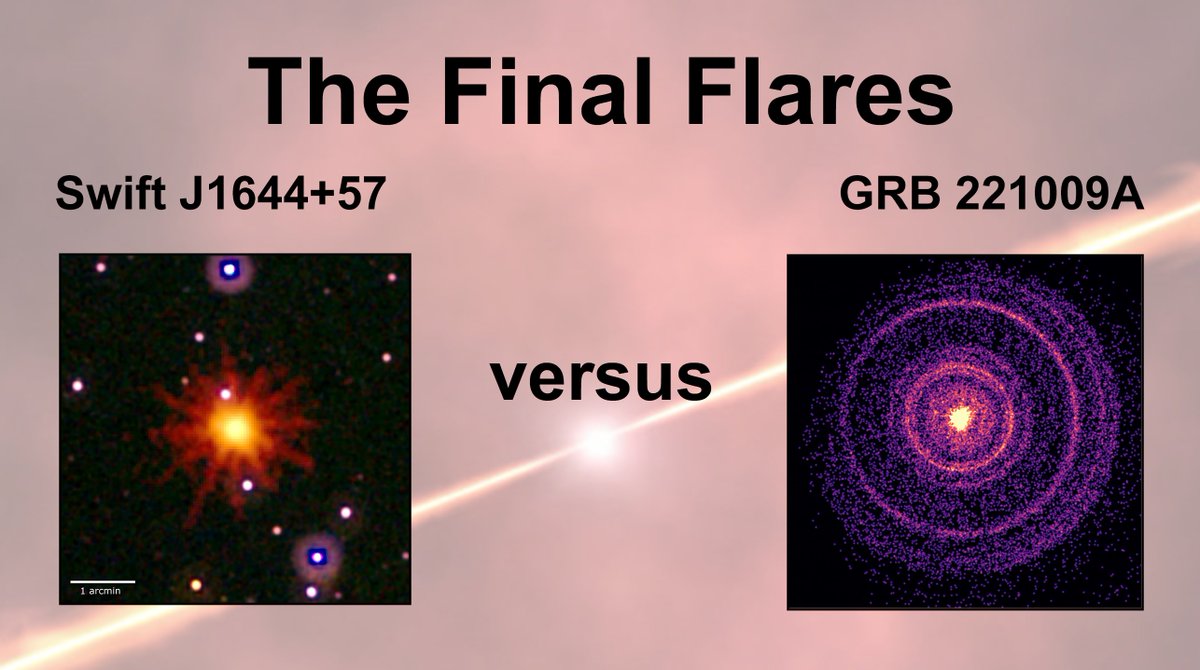
Science is done by teams, including teams of telescopes! While surveying our galaxy’s central region in 2011, Swift discovered a previously unknown supernova remnant, and @ChandraXray followed up to reveal more about it. Learn more: go.nasa.gov/40fq8uP #Swift20
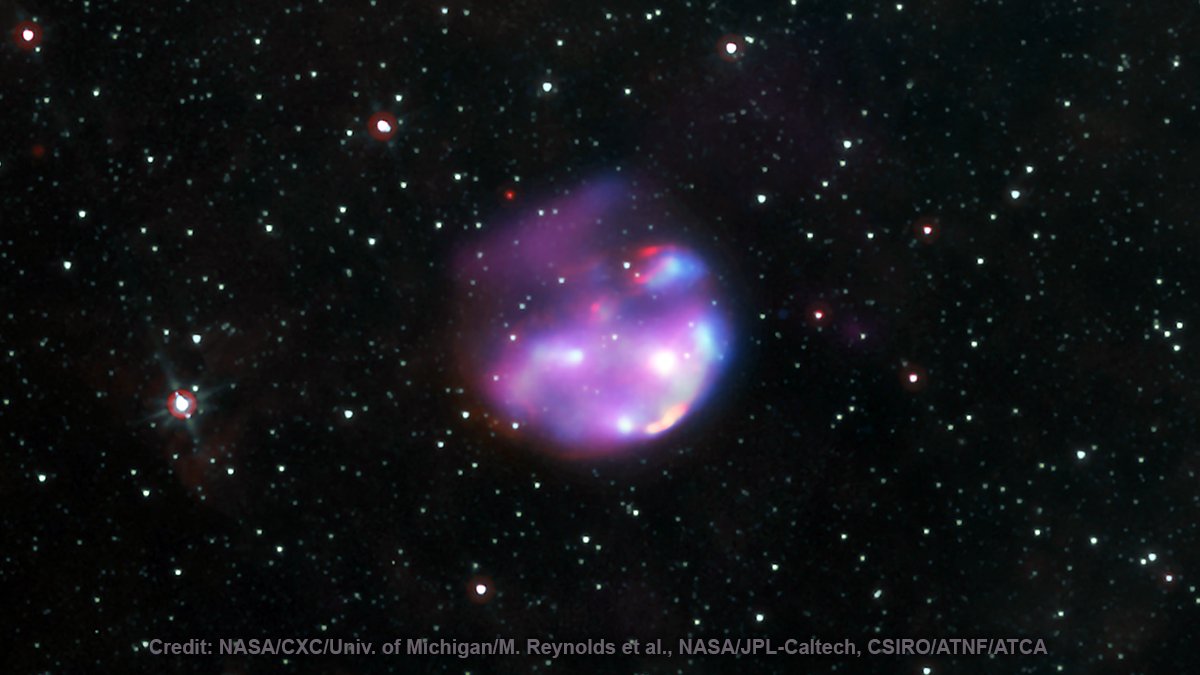
Our Swift telescope uses a method called "tiling" to help it observe cosmic sources whose positions aren’t precisely known. We can point the spacecraft at a region multiple times and combine the overlapping observations into a mosaic. #Swift20
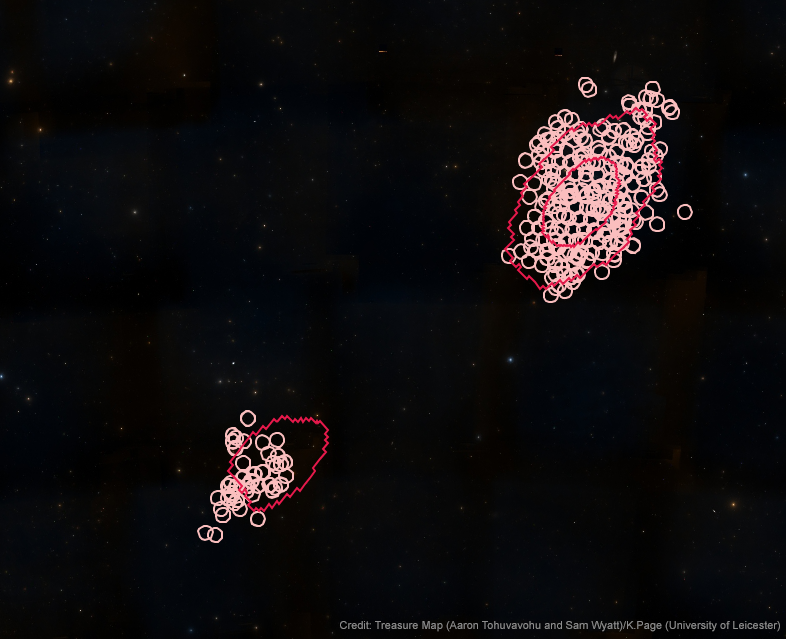
Our Battle of the Bursts tournament started out with 16 radiant cosmic events. Now, your picks have moved on to the second round — our Explosive Eight! Vote below to help us determine our Fiery Four! ⬇️ #Swift20
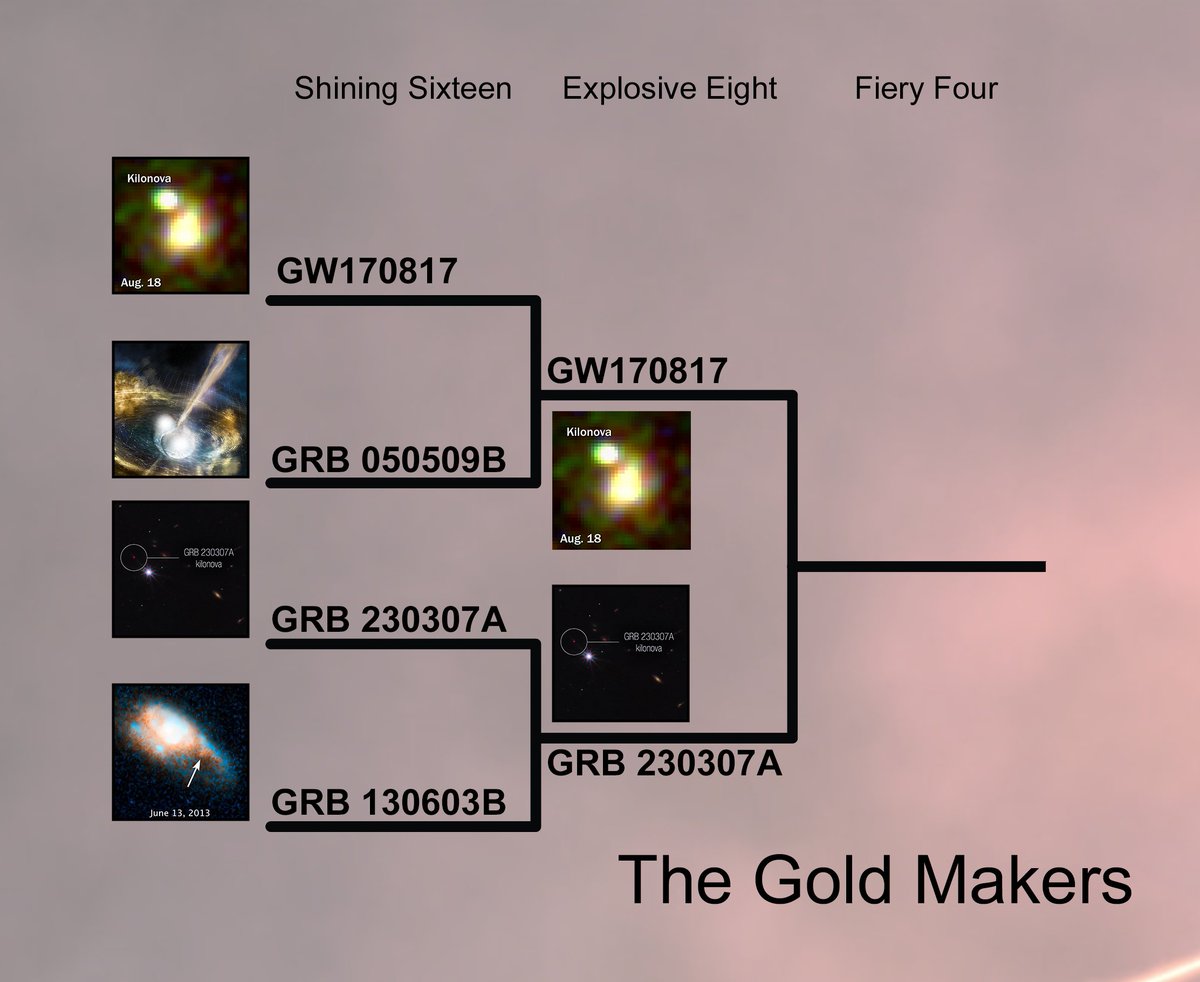
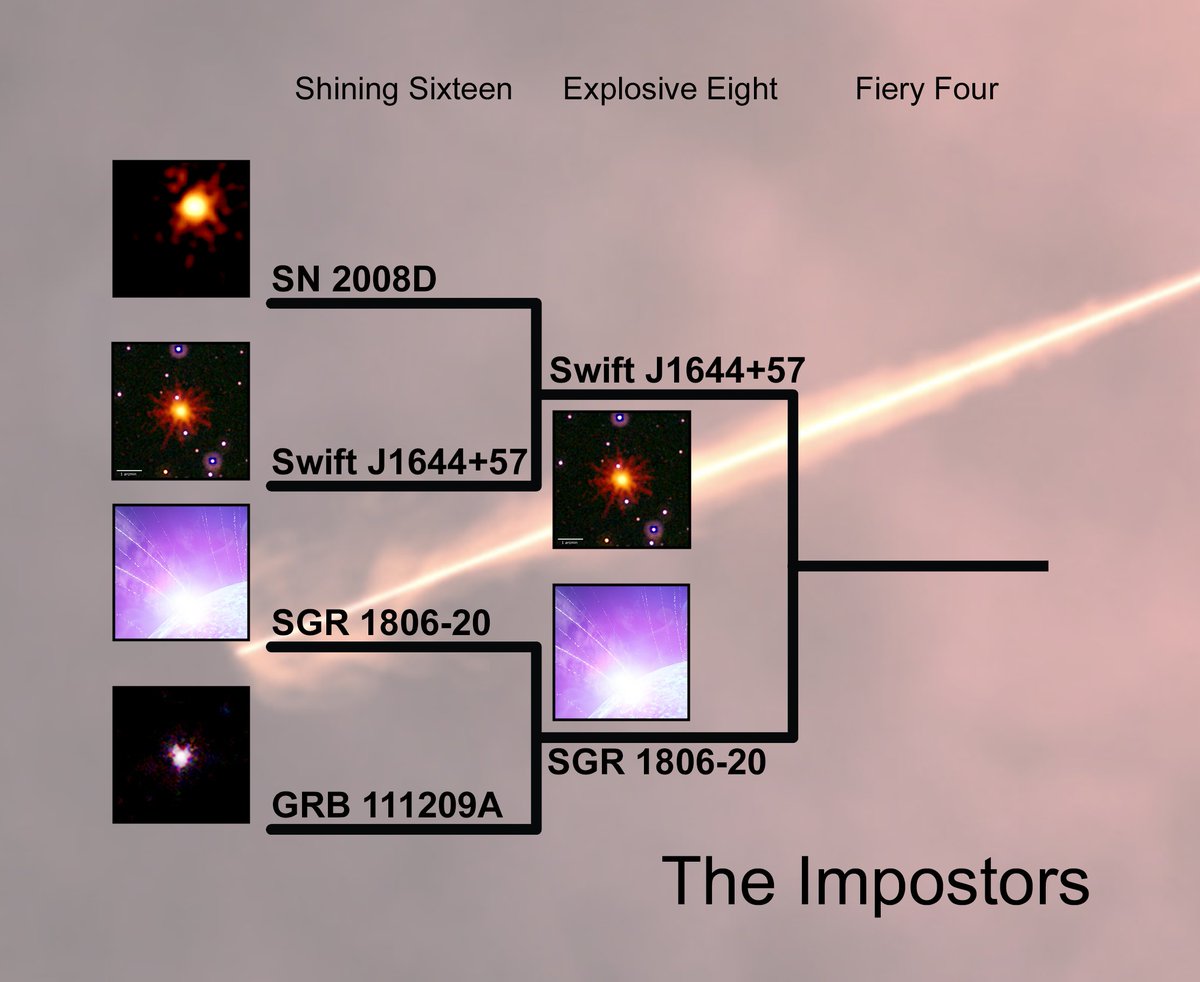

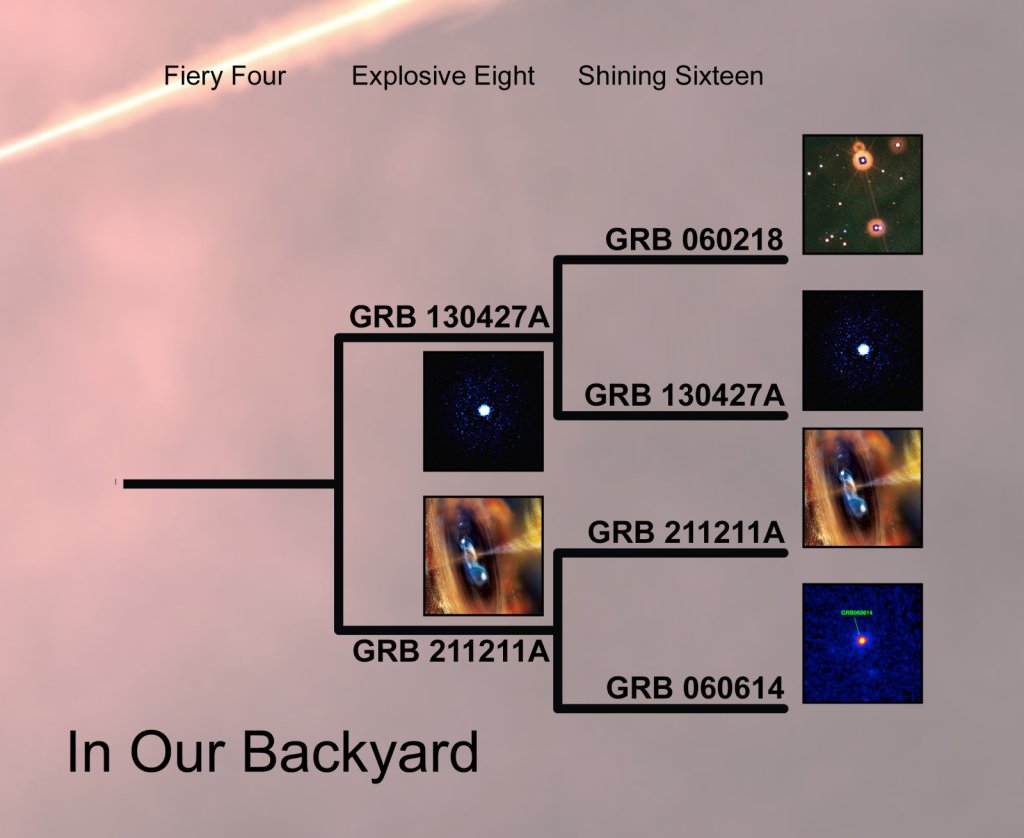
Since we kicked off the Battle of the Bursts, you’ve helped us narrow down 16 cosmic fireworks to our Fiery Four. Vote below to determine who’s making it to the championship round! ⬇️ #Swift20
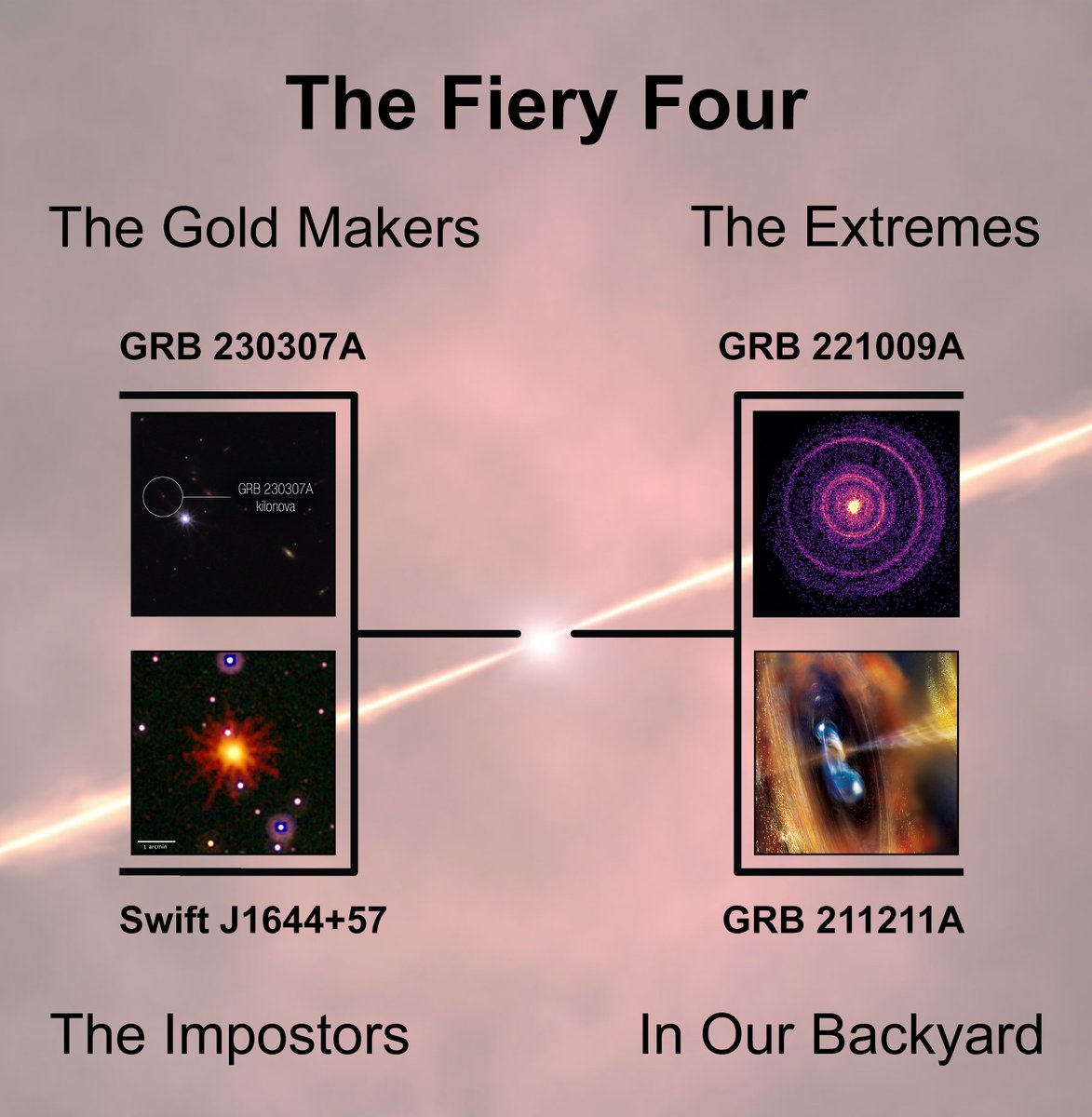
What has our Swift telescope been looking at? Since 2022, software has automatically cataloged Swift's X-ray observations, including planned pointings as well as unexpected discoveries. It is updated in near real time, making it unique among X-ray catalogs. #Swift20
SWIFT 2.0 brunch.co.kr/@codochi/147 #SWIFT20 #Bitcoin #etherum #NFT #Web3 #일러스트 #캐릭터 #코인만화 #coinappcrypto #characterdesign #GameFi #Web3 #Metaverse #코도치 #codochi
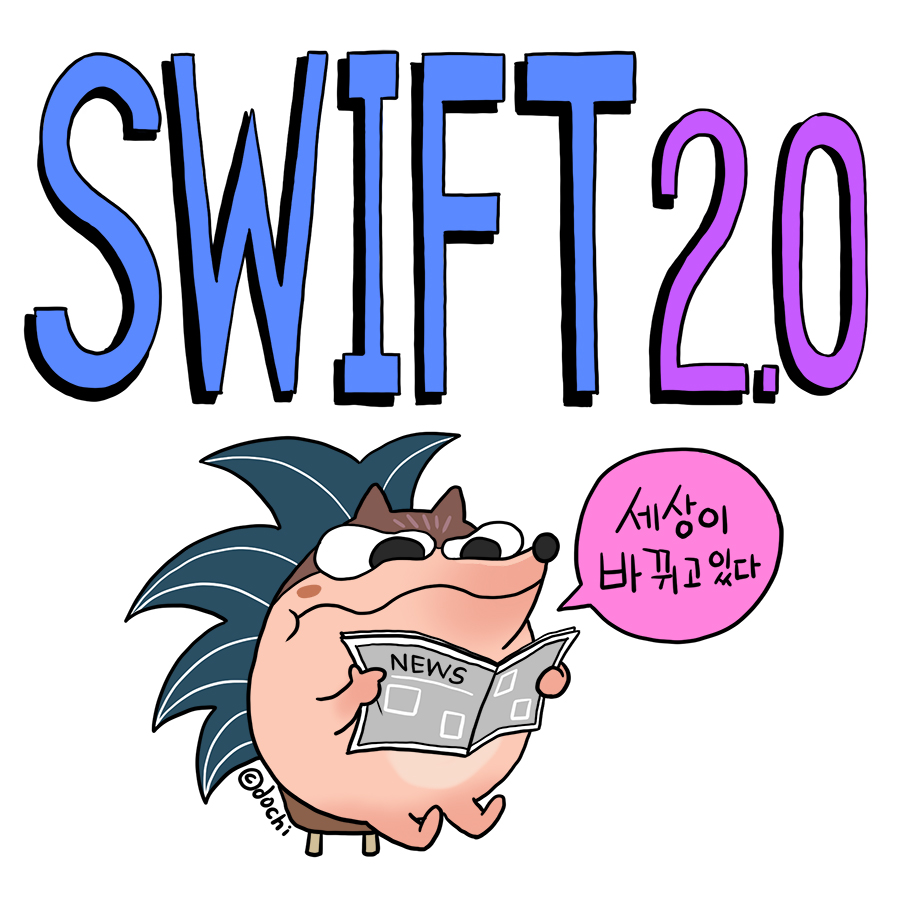
Our Swift observatory often teams up with others to help us learn about our universe. In 2020, Swift, NuSTAR, and @ESA’s XMM-Newton found a supermagnetized stellar remnant that was just 240 years old — a cosmic newborn! go.nasa.gov/4h93Stz #Swift20
Our discoveries often require several telescopes — take gamma-ray burst 230307A. It was detected by Fermi, then pinpointed by Swift and others, which allowed @NASAWebb to find the signature of tellurium, an element rarer than platinum on Earth. go.nasa.gov/3CifefW #Swift20
🎉 Celebrating 20 years of discovery with the Neil Gehrels Swift Observatory! For two decades, Swift has helped us uncover some of the universe's most amazing and mysterious events — like supernovae and gamma-ray bursts. Here’s to 20 years of uncovering the unknown! #Swift20
A system called GUANO (Gamma-ray Urgent Archiver for Novel Opportunities) automatically searches for BAT data associated with events like gamma-ray bursts and fast radio bursts detected by other missions, helping to pinpoint them and facilitate follow-ups. #Swift20
Our Swift spacecraft can quickly respond to unexpected events like gamma-ray bursts ... and that helps it spot other cosmic surprises, too! Read about five unpredictable things Swift has seen, plus one we're still looking for: tmblr.co/Zz_Uqjh4_zSk4u… #Swift20
Even after millions of observations and a lot of surprising discoveries, our Swift team is still hoping to catch a very special cosmic event — one detected with light, particles, and ripples in space-time called gravitational waves. Learn more: tmblr.co/Zz_Uqjh4_zSk4u… #Swift20
The votes are in … congratulations to GRB 221009A, our Battle of the Bursts tournament champion! Dubbed the BOAT, or brightest of all time, this record-setting gamma-ray burst was 70 times brighter than any burst we'd seen before. Thanks for playing! #Swift20
We’re down to The Final Flares in our Battle of the Bursts! Will our champion be Swift J1644+57 or GRB 221009A? Learn more about each explosive event and then vote below! ⬇️ #Swift20

Since we kicked off the Battle of the Bursts, you’ve helped us narrow down 16 cosmic fireworks to our Fiery Four. Vote below to determine who’s making it to the championship round! ⬇️ #Swift20

Our Battle of the Bursts tournament started out with 16 radiant cosmic events. Now, your picks have moved on to the second round — our Explosive Eight! Vote below to help us determine our Fiery Four! ⬇️ #Swift20




Welcome to Battle of the Bursts! Sixteen explosive cosmic events enter … but only one can win. Over the next week, fill in our bracket, pick your faves, and see which is crowned the champion. Who do you think will win? Check out the Shining 16 and start voting! ⬇️ #Swift20

Our Swift telescope’s fast response, combined with future gravitational wave detectors like @ESA’s LISA (a partnership with @NASA), will be key for revealing the nature of supermassive black holes in the cores of active galaxies. #Swift20
After launch, @NASARoman will survey the sky and discover new objects and events as they appear. Our Swift telescope will quickly follow up in multiple wavelengths of light. Some of these discoveries could even represent entirely new classes of astrophysical objects! #Swift20
Even after millions of observations and a lot of surprising discoveries, our Swift team is still hoping to catch a very special cosmic event — one detected with light, particles, and ripples in space-time called gravitational waves. Learn more: tmblr.co/Zz_Uqjh4_zSk4u… #Swift20
Swift’s UVOT (Ultraviolet/Optical Telescope) was designed to take a standard set of images following a gamma-ray burst. Since 2008, it has autonomously taken additional data if the burst is bright enough, leading to the earliest-ever UV spectrum obtained for a burst! #Swift20

What has our Swift telescope been looking at? Since 2022, software has automatically cataloged Swift's X-ray observations, including planned pointings as well as unexpected discoveries. It is updated in near real time, making it unique among X-ray catalogs. #Swift20
Our Swift spacecraft can quickly respond to unexpected events like gamma-ray bursts ... and that helps it spot other cosmic surprises, too! Read about five unpredictable things Swift has seen, plus one we're still looking for: tmblr.co/Zz_Uqjh4_zSk4u… #Swift20
A system called GUANO (Gamma-ray Urgent Archiver for Novel Opportunities) automatically searches for BAT data associated with events like gamma-ray bursts and fast radio bursts detected by other missions, helping to pinpoint them and facilitate follow-ups. #Swift20
There’s a BAT in space! Swift’s Burst Alert Telescope watches the sky for gamma-ray flashes. It even wears a mask (pictured) that creates a pattern of shadows to help pinpoint their locations. More: imagine.gsfc.nasa.gov/observatories/… #Swift20

Our Swift telescope uses a method called "tiling" to help it observe cosmic sources whose positions aren’t precisely known. We can point the spacecraft at a region multiple times and combine the overlapping observations into a mosaic. #Swift20

Our Swift observatory has been innovative since the start of its mission, and over the last 20 years it just keeps getting better! Now, with continuous commanding the team can send commands immediately to Swift telling it where to point, like using a joystick! #Swift20
While it usually looks for distant cosmic explosions, Swift can also look at solar system objects — sometimes with a friend! In 2010, Swift teamed up with @NASAHubble to catch the remnants of an asteroid smash-up just weeks after the collision. go.nasa.gov/42wr6FK #Swift20
Data from our Swift and Fermi spacecraft, along with other missions, showed a powerful eruption came from a magnetar — a neutron star with a magnetic field more than 10 trillion times stronger than a refrigerator magnet. go.nasa.gov/40NMKUE #FermiFriday #Swift20
Our discoveries often require several telescopes — take gamma-ray burst 230307A. It was detected by Fermi, then pinpointed by Swift and others, which allowed @NASAWebb to find the signature of tellurium, an element rarer than platinum on Earth. go.nasa.gov/3CifefW #Swift20
Science is done by teams, including teams of telescopes! While surveying our galaxy’s central region in 2011, Swift discovered a previously unknown supernova remnant, and @ChandraXray followed up to reveal more about it. Learn more: go.nasa.gov/40fq8uP #Swift20

In October 2022, a record-breaking gamma-ray burst triggered the detectors on our Fermi and Swift satellites, among others. The blast was observed by telescopes across the globe and likely signaled the birth of a black hole nearly 2 billion years ago. #FermiFriday #Swift20…
SWIFT 2.0 brunch.co.kr/@codochi/147 #SWIFT20 #Bitcoin #etherum #NFT #Web3 #일러스트 #캐릭터 #코인만화 #coinappcrypto #characterdesign #GameFi #Web3 #Metaverse #코도치 #codochi

Science is done by teams, including teams of telescopes! While surveying our galaxy’s central region in 2011, Swift discovered a previously unknown supernova remnant, and @ChandraXray followed up to reveal more about it. Learn more: go.nasa.gov/40fq8uP #Swift20

Swift’s UVOT (Ultraviolet/Optical Telescope) was designed to take a standard set of images following a gamma-ray burst. Since 2008, it has autonomously taken additional data if the burst is bright enough, leading to the earliest-ever UV spectrum obtained for a burst! #Swift20

In October 2022, a record-breaking gamma-ray burst triggered the detectors on our Fermi and Swift satellites, among others. The blast was observed by telescopes across the globe and likely signaled the birth of a black hole nearly 2 billion years ago. #FermiFriday #Swift20
Swift’s birthday cake was created by talented @NASAGoddard scientists who bake in their spare time! This sweet treat was served at a #Swift20 party last week, featuring the telescope studying a gamma-ray burst. Which portion of the cake would you want a slice of?
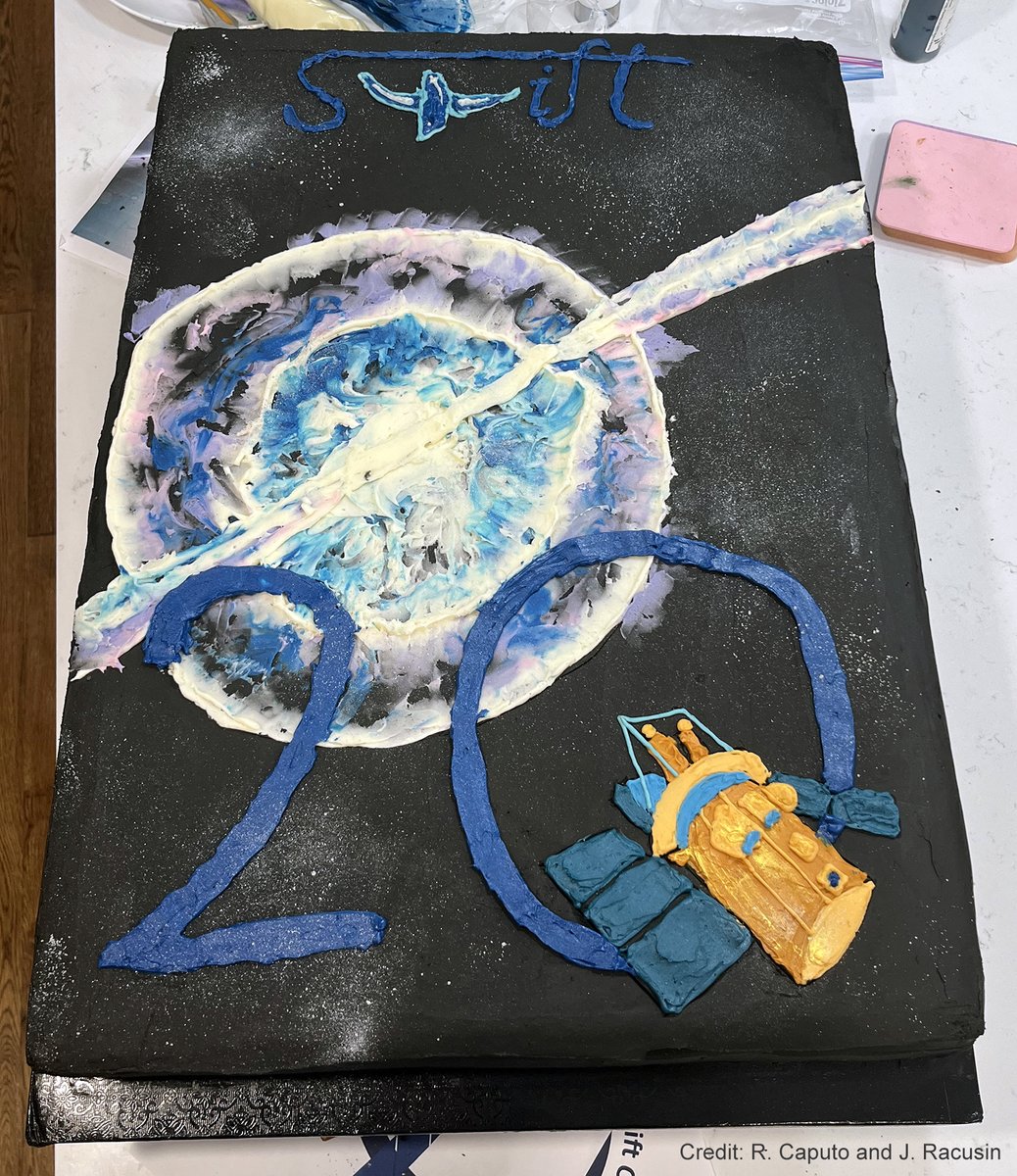
Since then, Swift and other observatories have solved the mystery of the origin of gamma-ray bursts. Swift has also contributed to groundbreaking results about other cosmic objects including black holes, stars, and more. Follow along as we continue to celebrate #Swift20.
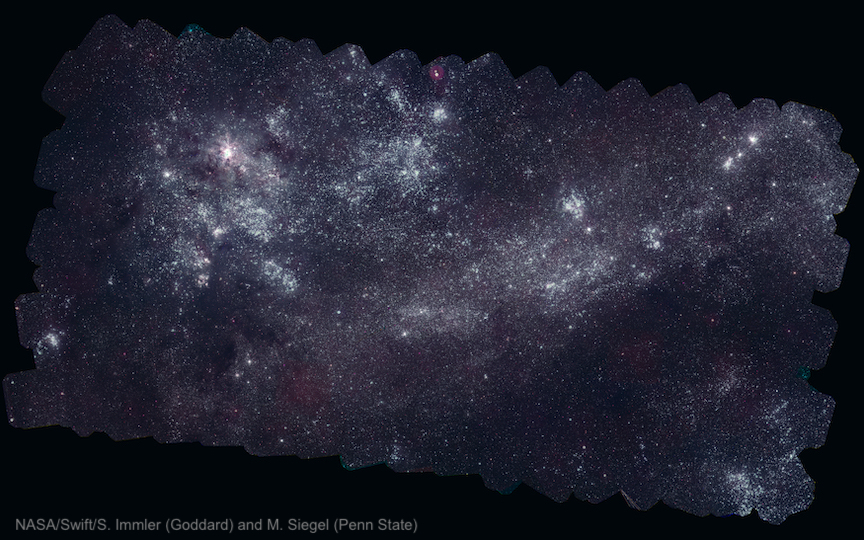
Welcome to Battle of the Bursts! Sixteen explosive cosmic events enter … but only one can win. Over the next week, fill in our bracket, pick your faves, and see which is crowned the champion. Who do you think will win? Check out the Shining 16 and start voting! ⬇️ #Swift20

Our Swift telescope uses a method called "tiling" to help it observe cosmic sources whose positions aren’t precisely known. We can point the spacecraft at a region multiple times and combine the overlapping observations into a mosaic. #Swift20

We’re down to The Final Flares in our Battle of the Bursts! Will our champion be Swift J1644+57 or GRB 221009A? Learn more about each explosive event and then vote below! ⬇️ #Swift20

Our Swift observatory often teams up with others to help us learn about our universe. In 2020, Swift, NuSTAR, and @ESA’s XMM-Newton found a supermagnetized stellar remnant that was just 240 years old — a cosmic newborn! go.nasa.gov/4h93Stz #Swift20
Happy 2⃣0⃣th launch-iversary Neil Gehrels Swift Observatory! #OTD in 2004, Swift launched on a Delta II from Cape Canaveral Air Force Station. Swift is a multi-wavelength space observatory dedicated to the study of gamma-ray bursts! #Swift20
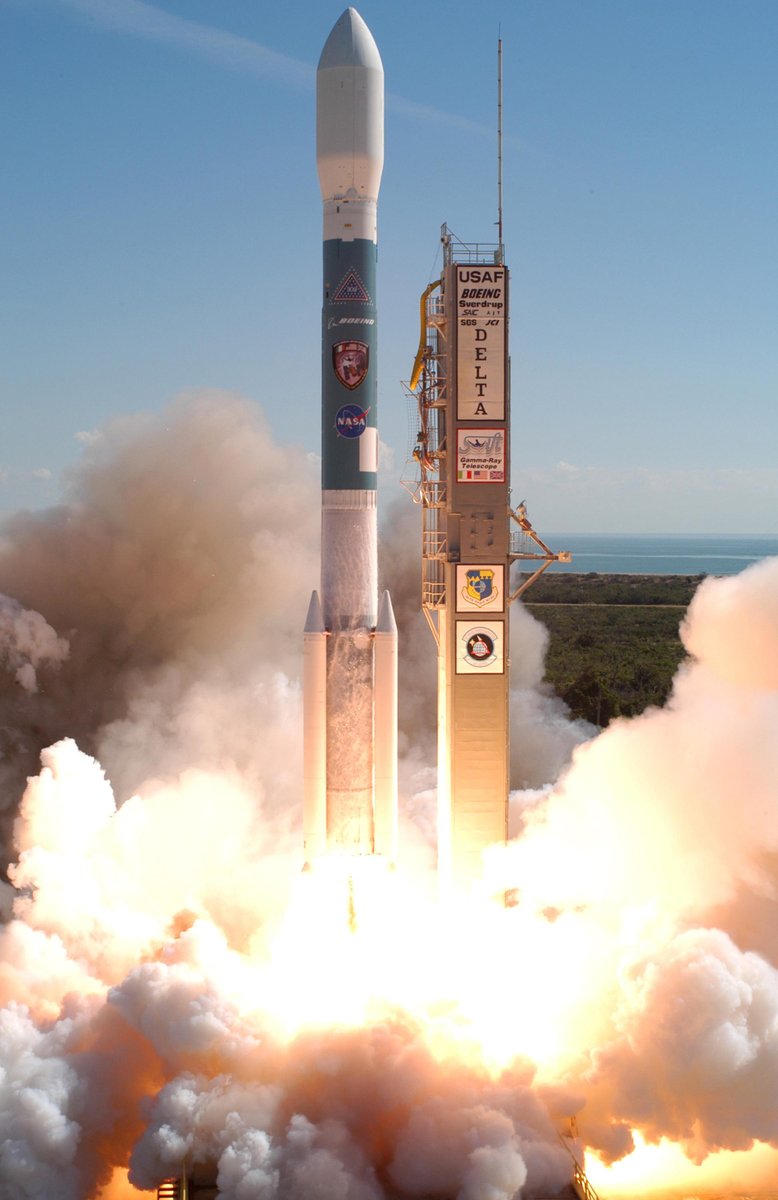
Our Battle of the Bursts tournament started out with 16 radiant cosmic events. Now, your picks have moved on to the second round — our Explosive Eight! Vote below to help us determine our Fiery Four! ⬇️ #Swift20




Since we kicked off the Battle of the Bursts, you’ve helped us narrow down 16 cosmic fireworks to our Fiery Four. Vote below to determine who’s making it to the championship round! ⬇️ #Swift20

Did you know that our Swift and Fermi telescopes are basically besties? They team up to study gamma-rays from sources near and far, like the time they helped scientists pinpoint powerful bursts from a nearby galaxy: go.nasa.gov/40jKt3s #FermiFriday #Swift20
#OTD 20 years ago, our Neil Gehrels Swift Observatory launched to help solve cosmic mysteries using gamma-ray, X-ray, UV, and optical light. Today it operates better than ever thanks to a new operational strategy implemented earlier this year. go.nasa.gov/4fzgBp7 #Swift20
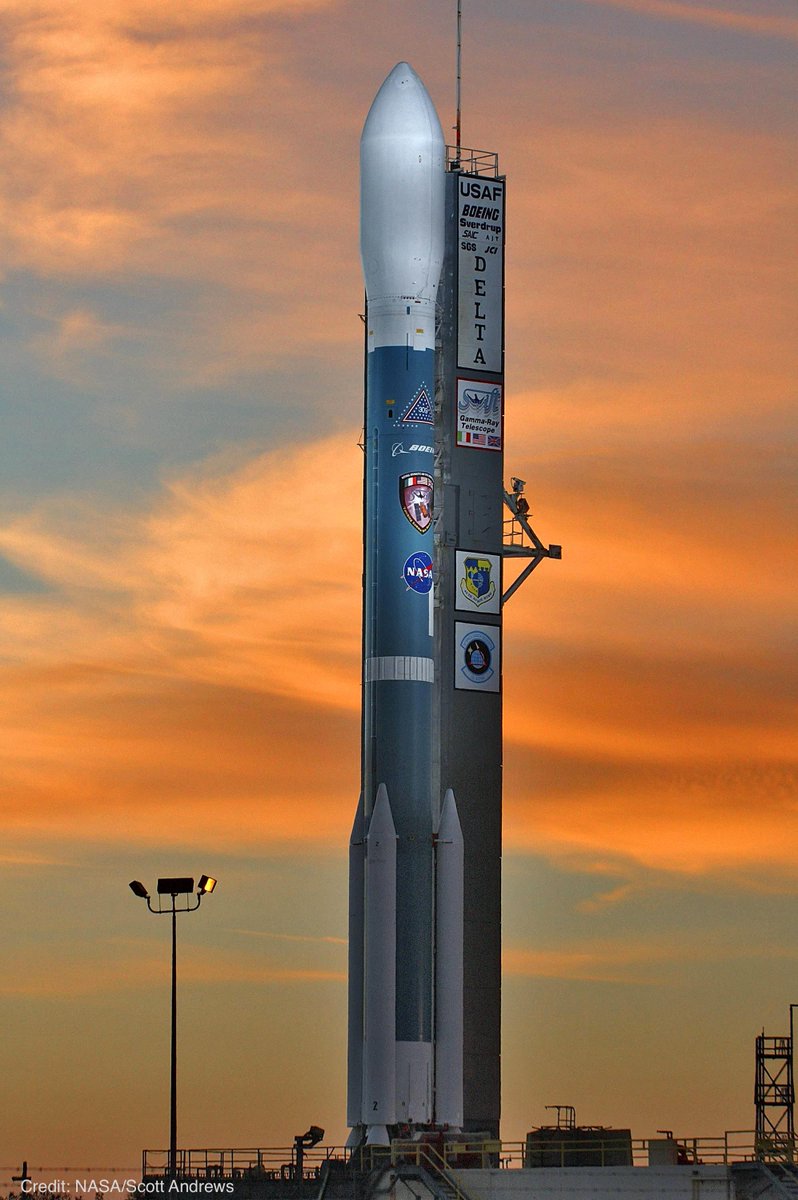
20 Novembre 2004 - 20 November 2024: two decades of game-changing astrophysics with the Neil Gehrels Swift Observatory! Let's celebrate together #Swift20

#TBT to when our Neil Gehrels Swift Observatory arrived at Cape Canaveral before launch. For almost 20 years, Swift has helped us understand some of the most powerful explosions in the universe, called gamma-ray bursts. Meet the mission: tmblr.co/Zz_UqjYEooXWmq… #Swift20
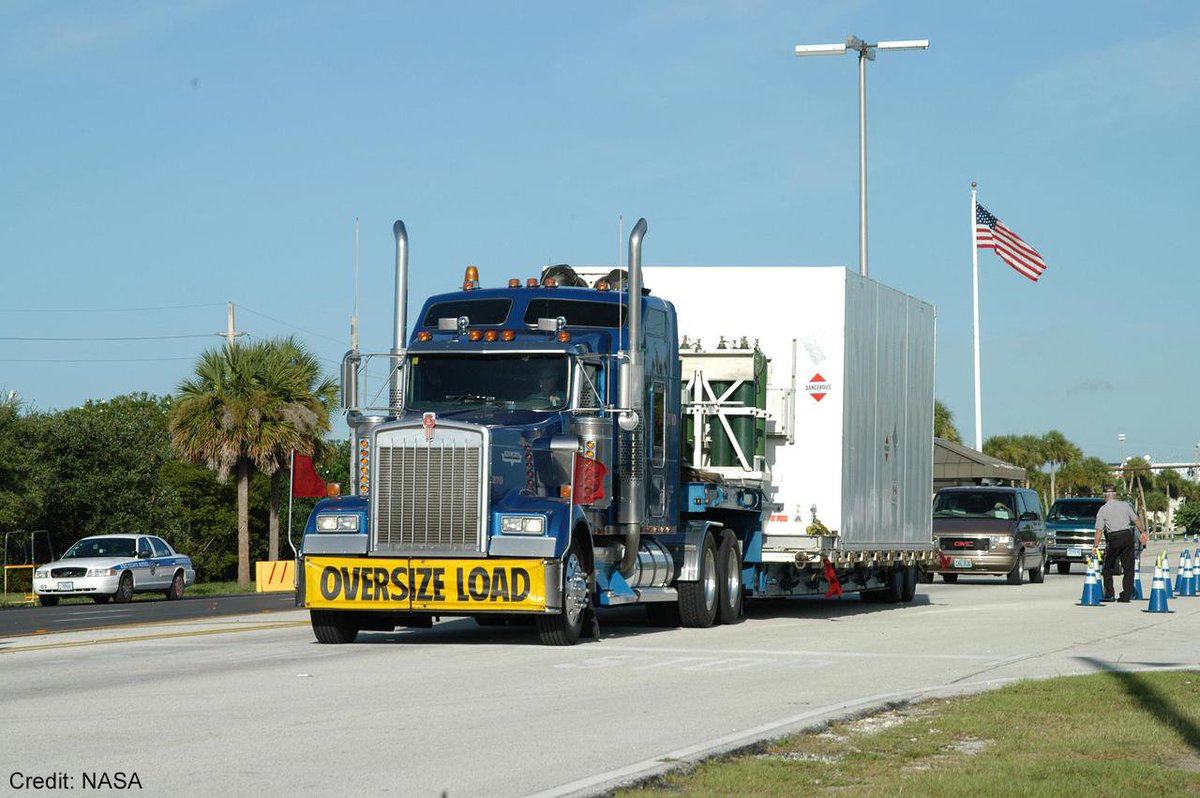
In the months leading up to our Swift observatory’s launch in Nov. 2004, the spacecraft wasn’t the only thing being prepared. Here, a worker at Cape Canaveral cleans the inside of half of the fairing that carried Swift into space on a Delta II rocket. #Swift20

Twenty years ago this week, Swift team members from around the world gathered at Cape Canaveral, FL, for the observatory’s launch. Join us tomorrow to wish Swift a happy 20th anniversary! In the coming weeks, we’ll keep exploring the mission’s science, people, and more. #Swift20
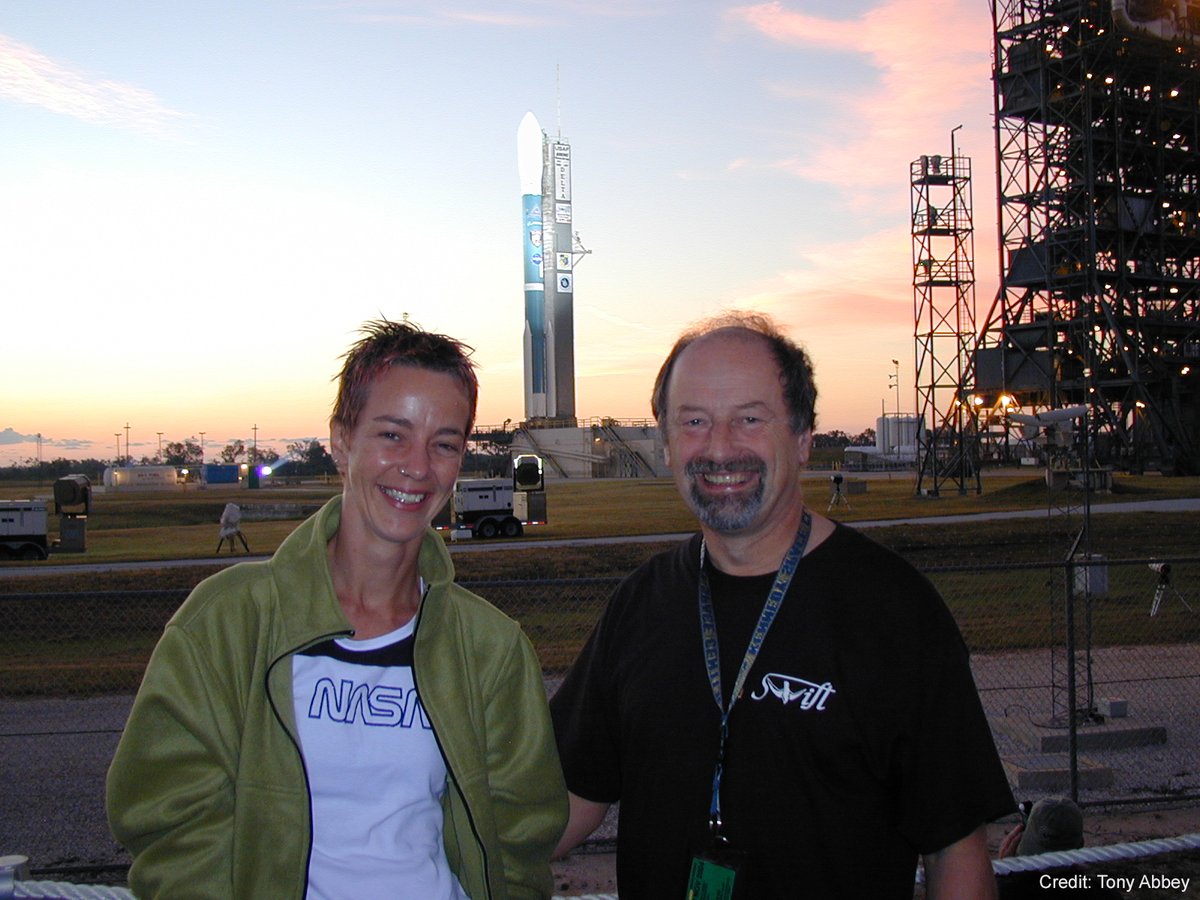
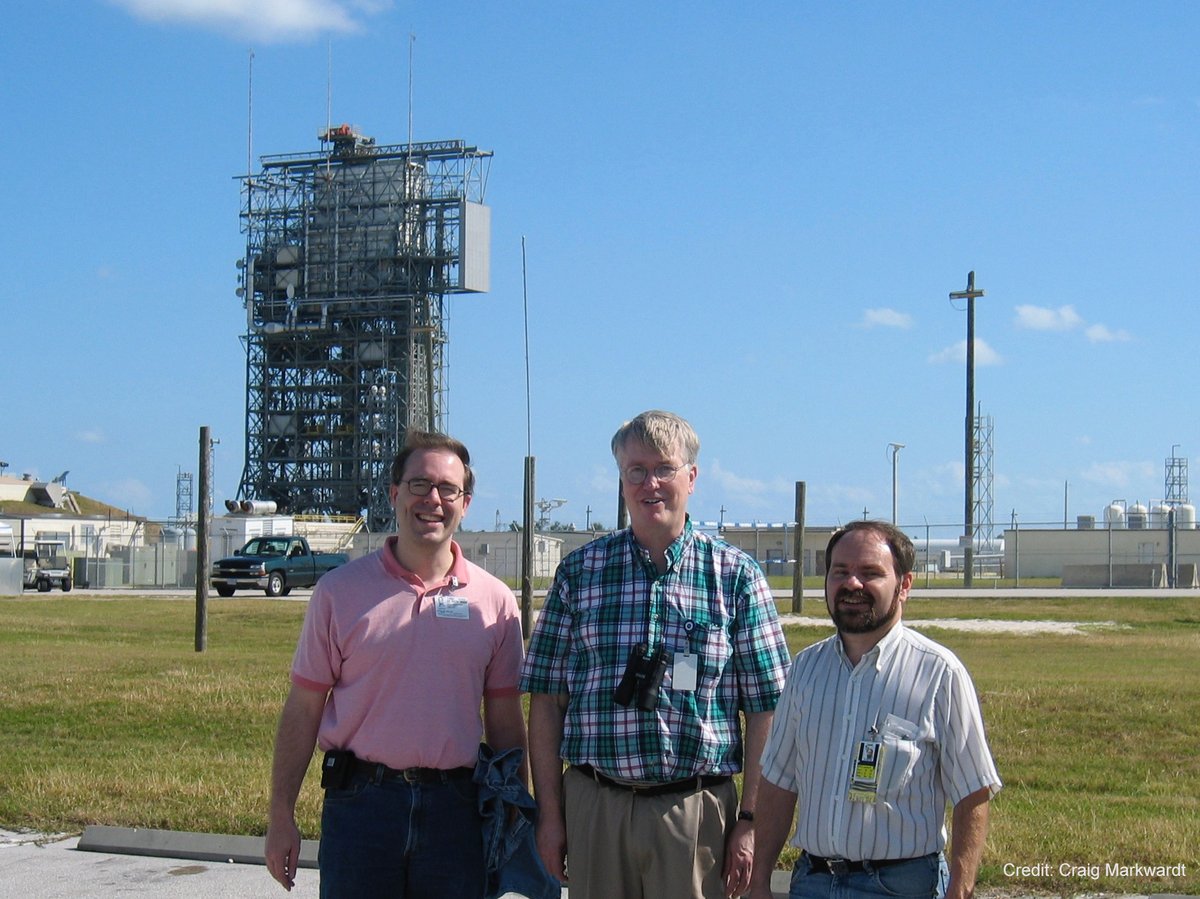
Something went wrong.
Something went wrong.
United States Trends
- 1. Ravens 58.1K posts
- 2. Ravens 58.1K posts
- 3. Lamar 46.3K posts
- 4. #heatedrivalry 13.9K posts
- 5. ilya 16.4K posts
- 6. shane 19.6K posts
- 7. Joe Burrow 20.9K posts
- 8. Hudson 11.7K posts
- 9. Chiefs 109K posts
- 10. connor 14.9K posts
- 11. Zay Flowers 4,175 posts
- 12. #WhoDey 4,087 posts
- 13. #hrspoilers 2,480 posts
- 14. Sarah Beckstrom 219K posts
- 15. Derrick Henry 4,461 posts
- 16. Zac Taylor 2,628 posts
- 17. Third World Countries 25.9K posts
- 18. scott hunter N/A
- 19. Harbaugh 3,155 posts
- 20. Mahomes 34.2K posts

